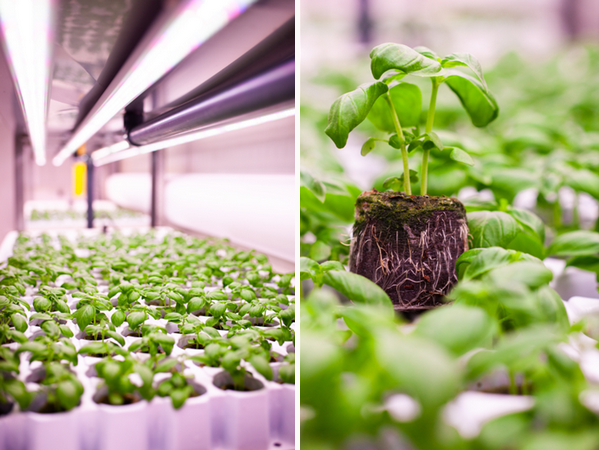"It is important to understand what type of system the grower is using. Jiffy specialists work with growers to provide the best product for their crop, system, and preference," says Dana Lucas, Segment Manager Controlled Environment Agriculture at Jiffy Group.
"If we compare our customers' production strategies globally, there are multiple ways to grow each crop, and that truly is the beauty of growing."
Given the unique challenges faced by vertical farms, the CEA industry is consistently developing new technologies and materials to suit this context, and substrates are not immune to this. Enter Jiffy, the horticultural substrate provider that has decades of experience in developing growing media for both home gardeners and commercial growers.

"Growers know they can rely on Jiffy year in and year out to supply them with a wide range of clean, safe, sustainable, and innovative solutions. Jiffy has decades of experience selling to greenhouse growers, with organic options and products like Performa, Growbag, Pots, and Pellets that are clean and easy to use," Dana adds.
According to Dana, Jiffy has the perfect solution for almost all CEA operating systems and works with a variety of raw materials such as sustainably produced peat, wood fibers, and coco coir. These materials can come either compressed, bonded, or loose.

Growing media depends on the production system
For example, crops grown in a deepwater culture (DWC) raft system will always have access to water. This lowers the requirement for the water-holding capacity of the substrate and increases the need for accurate oxygen levels to support respiration by the roots. For such an application, the team recommends its Performa or pellet product line, for instance. It's all based on the needs of the customer.
"Alternatively, plants grown in an NFT system rely on intermittent fertigation and thus require substrates with a higher water-holding capacity to ensure the roots do not dry out between irrigations. It is also important that the media hold together well and not release much debris, which could later restrict filtration. For this, Jiffy recommends its Jiffy pots which can hold media and 'act as a clean carrying case post-harvest for living lettuce'."
For a gutter-based system with drip irrigation, as is typically seen in greenhouse vines crops and strawberries, Jiffy recommends its GrowBags, EasyFill bags, or loose fill mixes.
Because of the variance in systems and crops, Jiffy can work with you to find the right substrates while also benefitting from Jiffy's global supply chain, global sales force, advanced handling of raw materials, and various certifications.

Sustainability is a key issue in substrate development
Jiffy is committed to sustainability and has implemented various measures to reduce the environmental impact of its products, such as through the RHP certification to ensure that Jiffy products meet strict quality and sustainability standards, as well as the ISO 22000 and ISO 14001 certifications for food safety and environmental systems, respectively.
Dana adds, "We have developed new products that no longer have plastic wrapping around the growing blocks. Instead, the company now uses PLA material (fine-fiber bio-web made of polylactic acid). This material is designed for any growing applications. The PLA net is biodegradable and compostable under controlled industrial conditions." On top of that, it's certified according to the harmonized European standard EN13432.

"We're really taking steps to improve energy efficiency in its production processes by investing in renewable energy sources, reducing waste, and reducing water usage in its facilities," Dana concludes.
 For more information:
For more information:
Jiffy Group
[email protected]
www.jiffygroup.com
